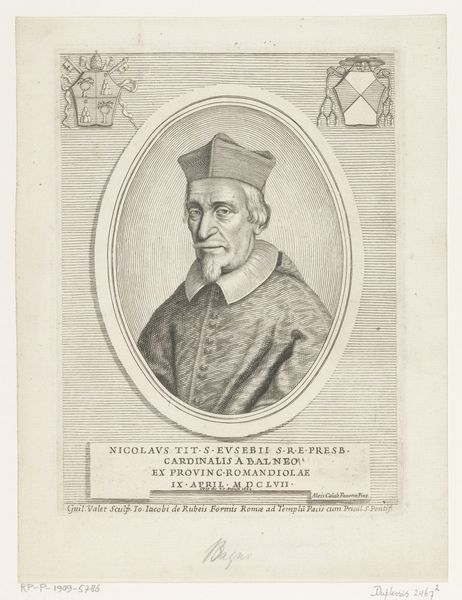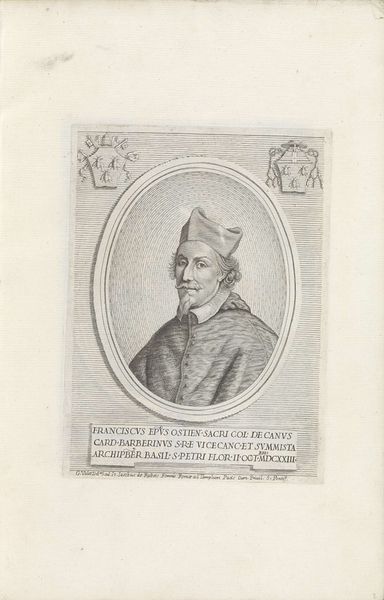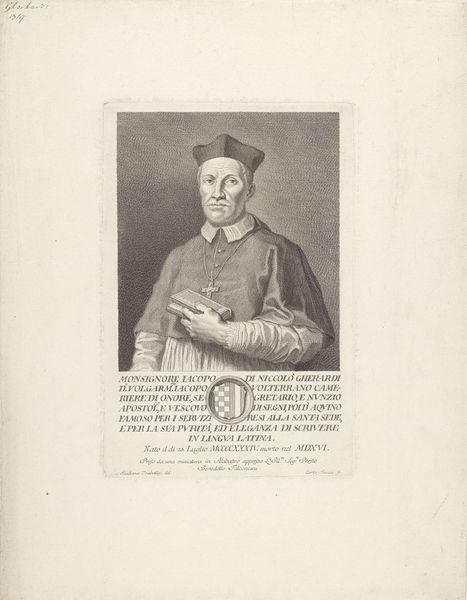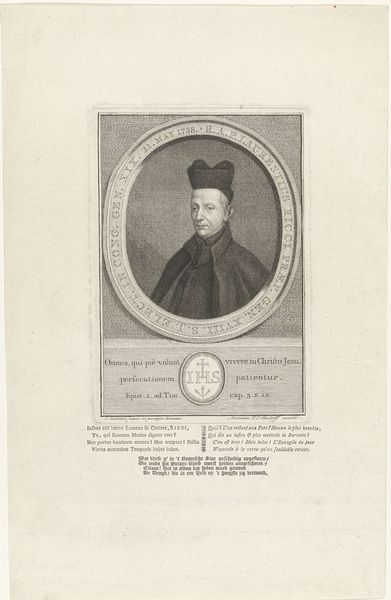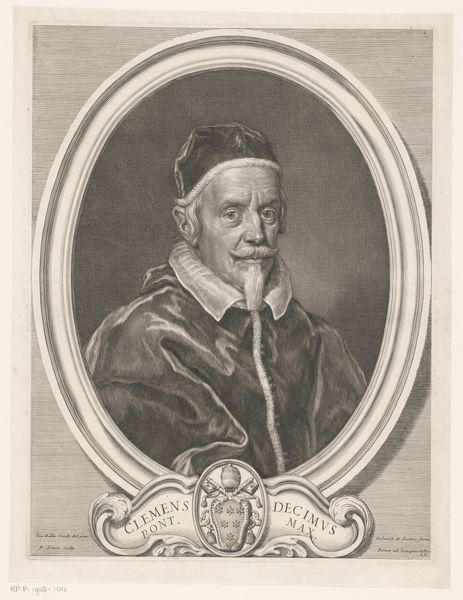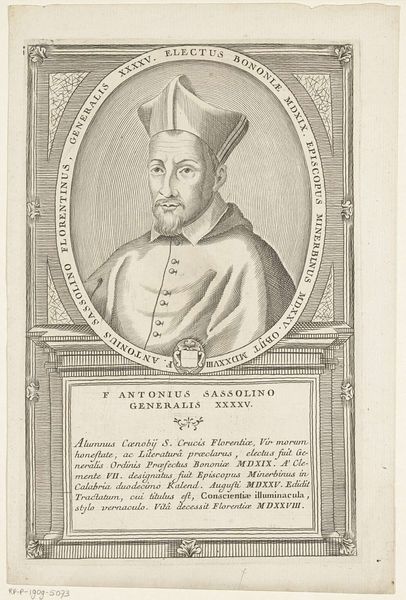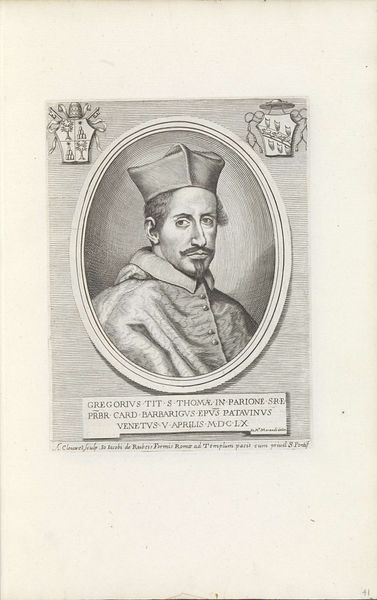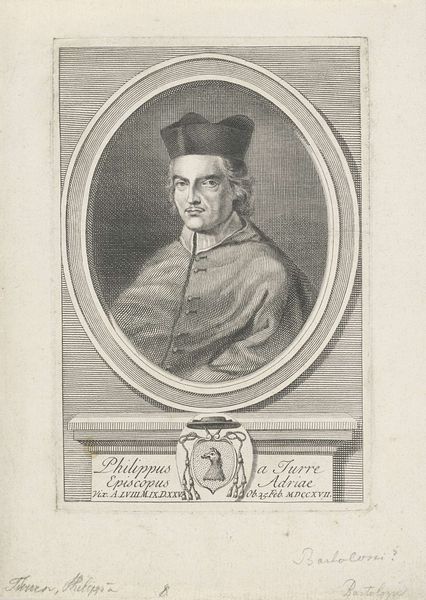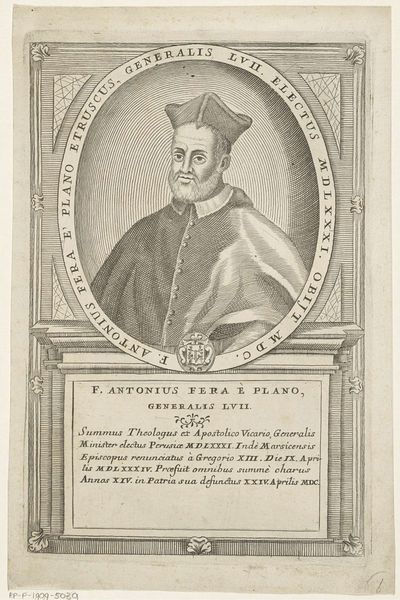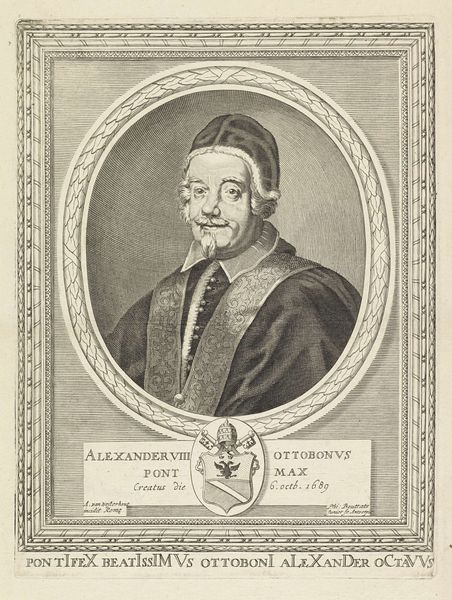
Portret van kardinaal Marco Antonio Franciotti 1666 - 1669
0:00
0:00
engraving
#
portrait
#
baroque
#
old engraving style
#
history-painting
#
italian-renaissance
#
engraving
Dimensions: height 194 mm, width 145 mm
Copyright: Rijks Museum: Open Domain
Curator: Let’s discuss this engraving, "Portret van kardinaal Marco Antonio Franciotti," crafted between 1666 and 1669 by Giovanni Battista Bonacina, here on display at the Rijksmuseum. Editor: There's a certain… gravity to it. The precision of the lines captures a dignified yet weary countenance. The oval frame gives it a contained, almost claustrophobic feel. Curator: Well, engravings as a medium require meticulous labor. Consider the tools Bonacina would have used, the painstaking process of carving lines into a metal plate, the socio-economic structures that commissioned and distributed such prints. The material conditions dictate the form we see. It reflects the skill, labor, and intended consumption. Editor: Agreed, the technique shapes the final image. Note how the contrasting line weights define the textures—the soft fabric of his garments versus the etched wrinkles around his eyes. Semiotics tell us these details signal power, piety, perhaps even age. The formal composition directs our eye; from the ornate crests, through the sitter, ending at the Latin inscription. Curator: Those crests, essential to understand Franciotti’s place within the societal hierarchy. This wasn't just an image, but propaganda affirming status, reinforcing social bonds. These prints would be reproduced en masse for distribution throughout social circles and beyond, solidifying Cardinal Franciotti's influence. Editor: True, but consider the purely aesthetic impact. Bonacina is using visual language. See how light and shadow create form? His hand skillfully manipulating light, creates contrast and depth. Each intentional stroke reinforces his subject's essence. This meticulous formal design produces an undeniable viewing experience. Curator: The “viewing experience” cannot be separated from the political framework that birthed it. I appreciate understanding the materiality here –the dissemination and how its reception solidifies ideological structures in early modern society. Editor: Indeed. A convergence of form and the tangible world reveals complex interpretations. Thank you for revealing these rich details. Curator: And thank you for your keen eye, that illuminates the artistic process for those that see.
Comments
No comments
Be the first to comment and join the conversation on the ultimate creative platform.
